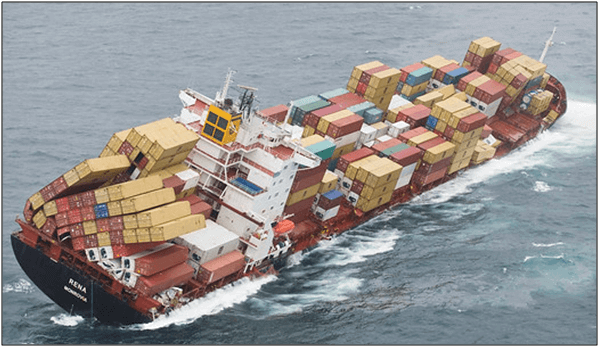There are many aspects to consider when selecting the most suitable mode of transport to get products from point A to B. The effective use of transportation equipment and modes reduces shipping and logistics costs. However, export planning is not always as simple as it seems. Depending on the destination, goods consigned to a foreign market can be transported by road, rail, air, sea, inland, waterways or a combination of any of these. When deciding which mode of transport to use, the following factors should be taken into consideration:

Table of Contents
Considerations of Cost and Time
The cost and time you spend on transporting goods from one place to another depends primarily on the mode of transport you choose. While export planning can be a tricky process, you can definitely benefit from understanding the most important factors to consider when choosing a mode of transport. There are several factors that you should keep in mind when browsing through different goods transportation services. The cost of transport will definitely impact the final cost of goods. Hence, it is important to keep your budget as the primary consideration when selecting a mode of transport.
Selecting transport according to the type of goods you are transporting can help you minimize costs. For instance, if you have to ship heavy goods over an extensive distance, you are better off sending it by rail. On the other hand, trucks are more suited for shorter commutes. Another factor is the transit time. A study conducted on freight transports between Sydney and Perth found the average door-to-door transit time using road transport is 2-4 days, whereas rail transport is 7 days, and sea transport takes an average of 10 to 14 days.
Consideration of Potential Goods Damage
The key factors which influence the potential for damage to goods include movement and acceleration forces. Freight containers experience the greatest acceleration forces during handling at the terminal or depot and during transfers at rail yards.
At sea, rolling and pitching tend to create steady acceleration forces. By comparison, rail and road modes tend to produce irregular acceleration forces, such as when braking, cornering, starting up the engine, hoisting and lowering, and when trains pass over rail switches.

Considerations of Accessibility, Frequency and Speed
Accessibility primarily deals with the ease of getting boarding a vehicle. If a mode is not easily accessible then it loses its usefulness because of its unavailability in a certain condition. A mode with higher frequency is desirable as the waiting time reduces thus saving time. Modes with good frequency helps especially in cases of delays. Speed is an important and deterministic factor depending upon the situation. Fastest mode may seem to be best option but cost associated with it makes it less lucrative, a cheap mode might result in delay and the purpose of whole trip may be defeated. In cases of emergency speed gains much more significance as compared to day to day trips.

Considerations of Capacity and Fuel efficiency
Capacity is an important factor especially for logistic companies, it becomes important in case of travelling in a group. While going on a trip with your complete class you cannot expect to take multiple vehicles because of safety and security concern a vehicle with more carrying capacity will be preferred. In case of transporting goods, the concept of scale of economies is best exploited for economic profit while dealing with bulk orders. With growing environmental concerns, many people and companies prefer to choose an option with smaller carbon footprint. Some people prefer electric vehicle solely because of the “green” label associated with them. Fuel efficiency is closely linked with carbon emission while doing a comparative study, getting more output from same quantity of fuel is always desirable.
Considerations of Reliability and Safety
The chosen mode of transport must be reliable. All factors will turn out to be useless if the vehicle develops some fault or is prone to develop fault. If the mode is not reliable than it will result in loss of both time and money. Reliability again becomes important on the basis of situation. Considering the increased cases of accidents safety becomes another important factor. Anyone will wish to ensure maximum available safety for their loved ones. In case of logistics also safety matters a lot especially while dealing with fragile material.
Other Considerations
A number of special services such as warehousing, packing, loading and unloading are also taken into consideration while deciding about a mode of transport.

From the above discussions, it is clear that each mode of transport is suited for a particular type of traffic. The rail transport is particularly suited for carrying heavy and bulky goods over long distances. Motor transport is suitable for carrying small consignments over short distances. Air transport is suited to light and precious articles which are to be delivered quickly. Ocean transport is appropriate for carrying heavy bulky goods over long distances at the cheapest possible cost.
The terms of the export sales contract, e.g. the buyer may stipulate that a particular mode of transport should be used. The location of the foreign market – obviously, a destination on another continent will eliminate the road and rail option for the main transport leg. Another consideration is the location of the overseas buyer in relation to airports, sea ports and railway stations. This includes the facilities at the port of destination, e.g. whether there is bulk handling or container-handling equipment.
Conclusion
One conclusion that can be made is that where time is not a top priority, maritime shipping offers the greatest of benefits. Consider all these factors and you will definitely be able to select the right mode of transports and also make your pick from the best goods transportation services in the market today.
References
Dewitt, W. & Clinger, Jennifer. (2017). “Intermodal Freight Transportation”. Retrieved from https://tradelogistics.co.za/factors-to-consider-when-choosing-the-most-suitable-mode-of-transport/, accessed 15/12/2019.
Ding Shao Jiang, DLSM. (2019). “Intermodal Freight Transportation for Effective Supply Chain Management”. Retrieved from SIPMM: https://publication.sipmm.edu.sg/intermodal-freight-transportation-effective-supply-chain-management, accessed 15/12/2019.
Sivalingam Munisamy, DLSM. (2018). “The Eight P’s for Effective Delivery of an Integrated Logistics Operation”. Retrieved from SIPMM: https://publication.sipmm.edu.sg/8-p-effective-delivery-integrated-logistics-operations, accessed 15/12/2019.
Sonia Lai Jie Yin, DLSM. (2018). “Key Success Factors for Effective Logistics Practices”. Retrieved from SIPMM: https://publication.sipmm.edu.sg/key-success-factors-effective-logistics-practices, accessed 15/12/2019.

